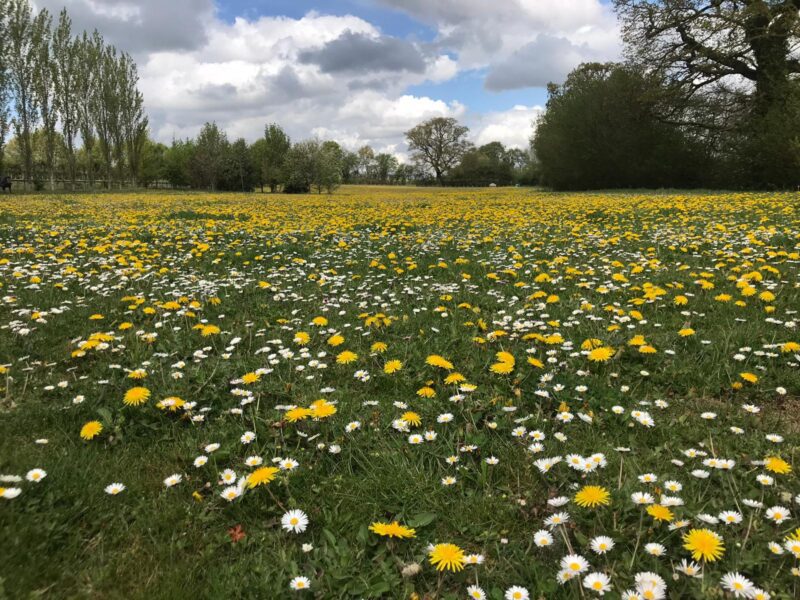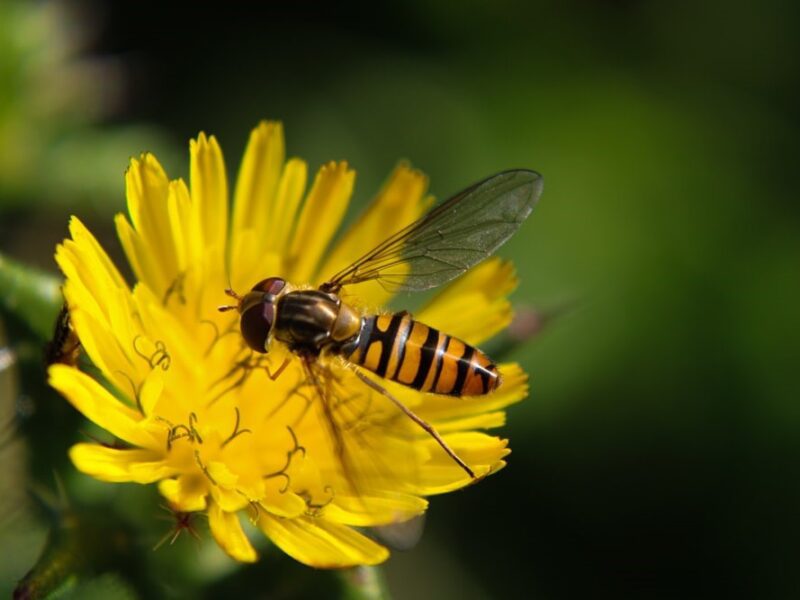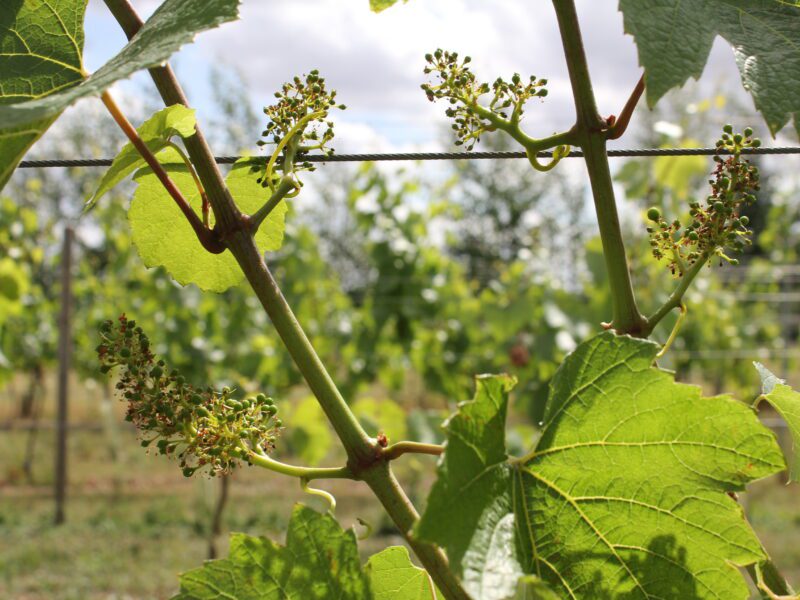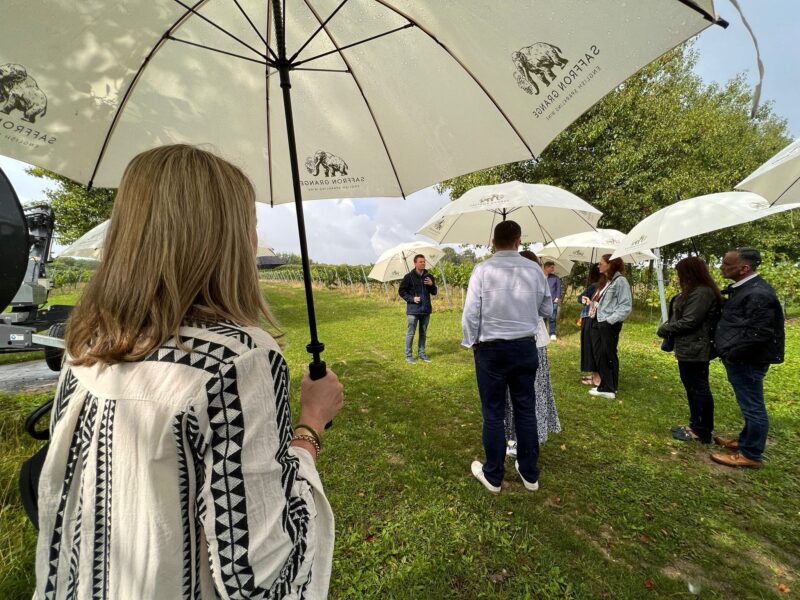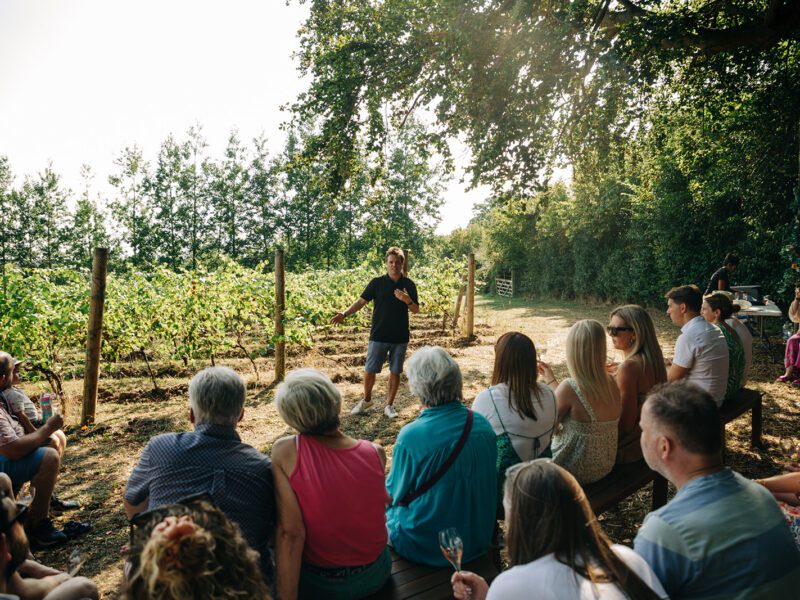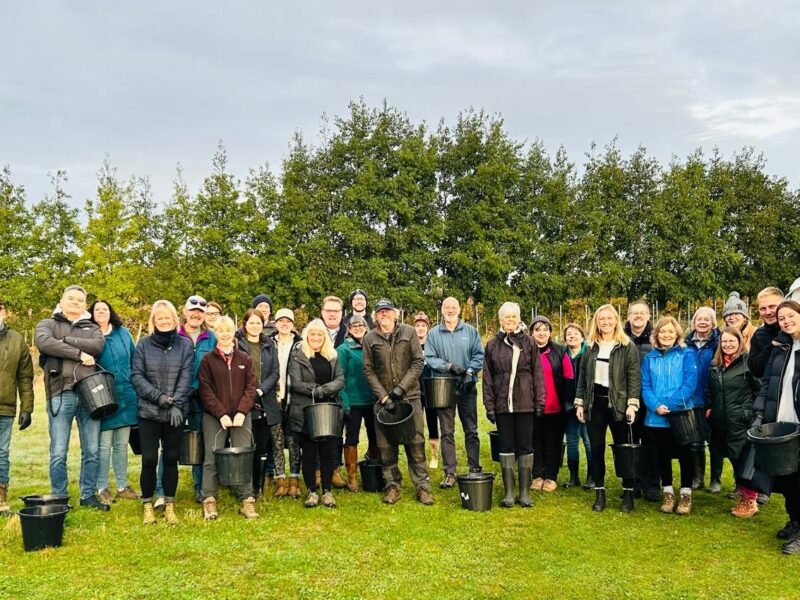As we reflect on the 2024 vintage at Saffron Grange Vineyard and look ahead to 2025, we’re excited to share our notes on what has been a notably unique year here at Saffron Grange.
2024’s vintage was shaped by a mix of challenging weather conditions offset by the usual beauty of an English spring and summer, along with the rewards of working with such a strong team. The overarching theme though is of resilience in the face of adversity, culminating in a successful harvest that we’re really looking forward to tasting and sharing with you in due course.
The 2024 growing season presented us with a dynamic climate. The year began with the first signs of spring appearing as expected: aconites graced the landscape by the end of January, and the snowdrops emerged at the beginning of February. Thanks to our chalky soils, we were greeted by the first dandelions in the second week of March, coinciding with the sap starting to flow and the first flutter of butterflies.
